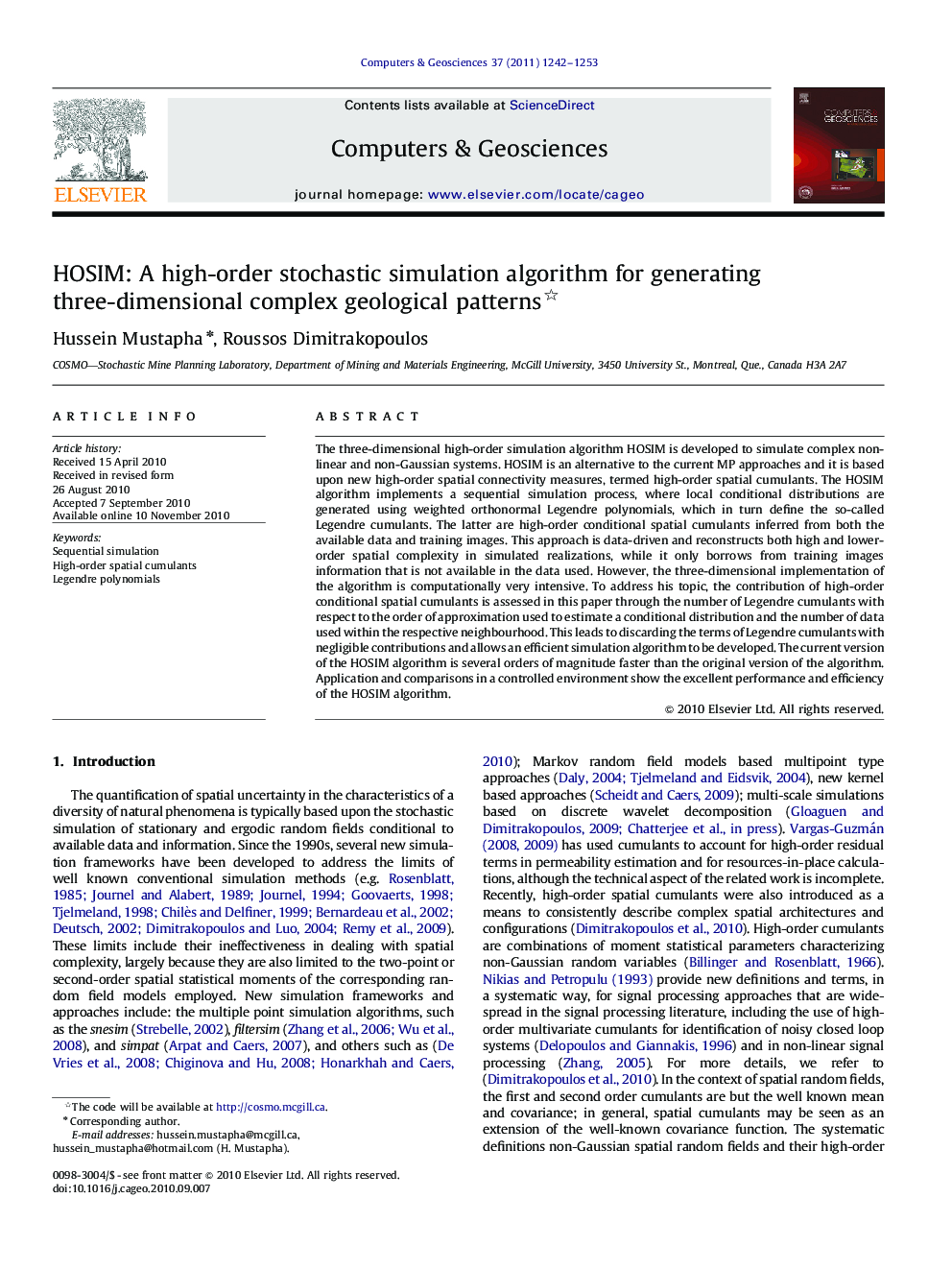| Article ID | Journal | Published Year | Pages | File Type |
|---|---|---|---|---|
| 507162 | Computers & Geosciences | 2011 | 12 Pages |
The three-dimensional high-order simulation algorithm HOSIM is developed to simulate complex non-linear and non-Gaussian systems. HOSIM is an alternative to the current MP approaches and it is based upon new high-order spatial connectivity measures, termed high-order spatial cumulants. The HOSIM algorithm implements a sequential simulation process, where local conditional distributions are generated using weighted orthonormal Legendre polynomials, which in turn define the so-called Legendre cumulants. The latter are high-order conditional spatial cumulants inferred from both the available data and training images. This approach is data-driven and reconstructs both high and lower-order spatial complexity in simulated realizations, while it only borrows from training images information that is not available in the data used. However, the three-dimensional implementation of the algorithm is computationally very intensive. To address his topic, the contribution of high-order conditional spatial cumulants is assessed in this paper through the number of Legendre cumulants with respect to the order of approximation used to estimate a conditional distribution and the number of data used within the respective neighbourhood. This leads to discarding the terms of Legendre cumulants with negligible contributions and allows an efficient simulation algorithm to be developed. The current version of the HOSIM algorithm is several orders of magnitude faster than the original version of the algorithm. Application and comparisons in a controlled environment show the excellent performance and efficiency of the HOSIM algorithm.
